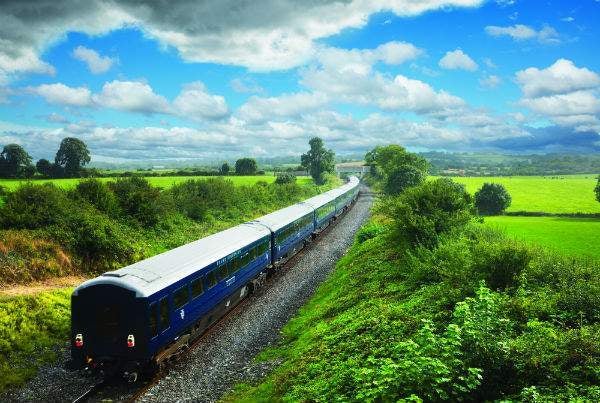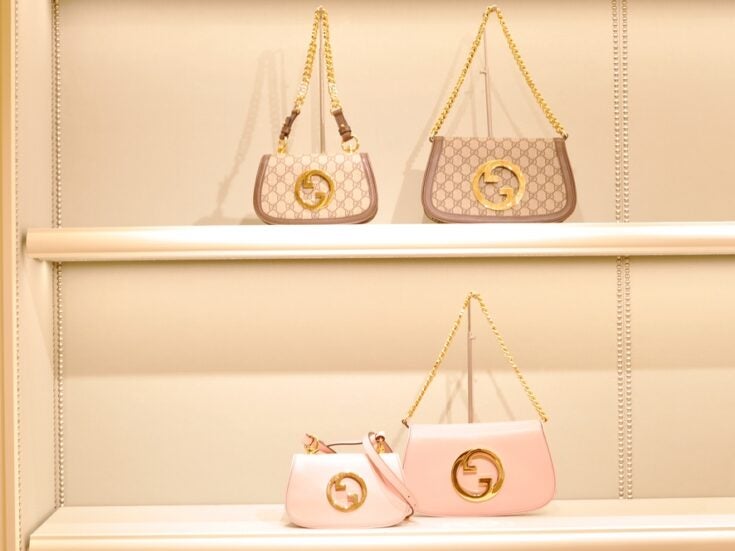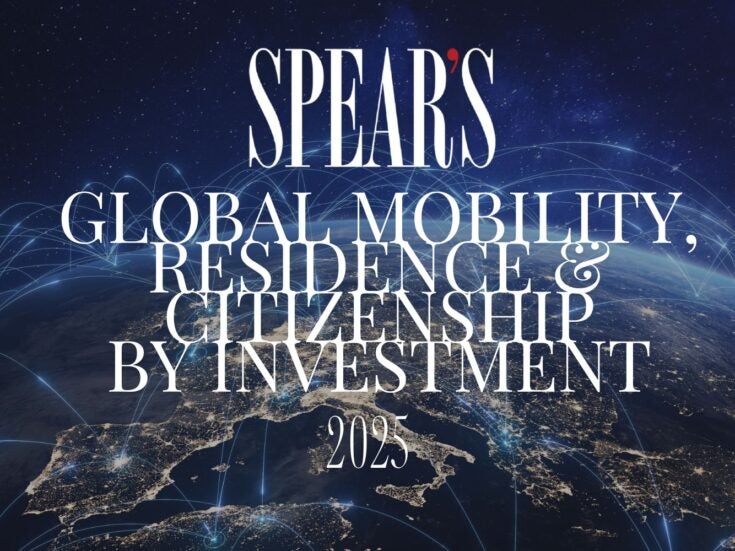
A delight for the eyes and for the taste buds, Belmond’s sumptuous four-day
journey taking in Ireland’s rugged west coast is a real corker of an experience, writes Teresa Levonian Cole
At Dublin Station, alongside our gleaming new train, liveried waiters awaited our arrival, bearing flutes of champagne. A good start. Fellow passengers clinked glasses and eyed each other for potential dinner companions, while a fiddle- and banjo-player introduced us to the jaunty strains of the Irish jig. The trip I was about to undertake — a new route for Belmond — was to be a gentle, four-day jaunt around the perimeter of the Emerald Isle.

Once settled over scones and Laurent Perrier (its fizz quickly became the leitmotif of our trip) we were off, travelling southwards at a stately pace. We were few, I noted — another big tick. An intimate group of 28 was spread out in the 20 available cabins. Although you would be hard pushed to call them spacious — it is, after all a train — they are attractive and well equipped, with twin beds arranged in an L-shape (a honeymoon couple occupied one of the two double-bedded cabins), cupboard, night table and a useful desk all somehow crammed in. Here, as throughout the train, design elements echo local motifs, lest any well-travelled guest momentarily forget which country they are in: Celtic keys feature in decorative fretwork on the walls, and are woven into the carpet design, with Irish tweeds for blankets and upholstery. Best of all, there are en suite bathrooms, with hot, powerful showers, and all the fluffy towels one’s heart and person could desire.
No sooner were we installed than we arrived at Cork, and transferred onto a coach for a drive along the Lee River (improbably lined with palm trees, thanks to the effect of the Gulf Stream). Our first visit was to Midleton, and to a producer of one of Ireland’s most famous products: whiskey. ‘Note the ‘e’ in Irish whiskey,’ said Brian, our docent at Jameson’s Old Distillery, a beautiful collection of 19th-century red-shuttered limestone and granite buildings, operational until 1975. ‘There are two principal differences from the Scottish variety. One is that Irish whiskey is triple distilled, while Scottish tends to be distilled twice only; and we dry our barley with smokeless anthracite, whereas the Scots usually use peat, which gives their whiskey a smokey flavour.’
Ireland once produced 60 per cent of the world’s whiskey, and Jameson proudly displays the largest pot still in the world, with a capacity of 144,000 litres. We explored the grain stores, malting house, Heath-Robinson-esque copper stills, and the dizzyingly fragrant cellars (‘Please turn off your mobile phones,’ warned Brian, ‘in case a spark ignites the evaporate, otherwise known as angel food’).
Back on the train, it was time for dinner: served, on the Grand Hibernian, at tables arranged refectory-style, along the length of two carriages. The tiny galley manages to conjure miracles, with local ingredients sourced daily. Such delights as Kenmore Bay lobster salad, Kerry Mountain heather-marinated lamb, and (less local, but quite delicious) 70 per cent Carupano chocolate savarin, along with paired wines.

It was a chance to get to know my fellow passengers: an English couple, a handful of Europeans, and a great many North Americans. It was an interesting mix, that included an Italian rocket scientist who had worked on the American space programme in the 1960s and ’70s, and a delightful couple from Moscow, who enthused over Chekhov and Balakirev, and taught me Russian tongue-twisters between courses.
Our action-packed itinerary included a visit to Blarney Castle, with its famous bluestone — one half of the Stone of Scone — brought back from the Holy Land by Crusaders in circumstances unknown. Legend has it that an erstwhile lord of Blarney, who suffered from a speech impediment, saved the local witch from drowning in the lake. Grateful, she told him that if he kissed the stone, he would be cured — whence the association of the stone with eloquence. I visited the witch’s lair in the Rock Close, an ancient Druidic site infused with genius loci, and climbed the castle to the battlements beneath which the stone is lodged. Here, a long line of people waited to hang backwards over a precipice, and be photographed kissing the iconic object. In the face of such unsanitary gymnastics, however, I voted with George Bernard Shaw, who declared such antics unnecessary, his gift of the gab being already ‘sufficient, if not somewhat excessive’. But the views alone, from the battlements, made the tortuous climb worthwhile.
One afternoon was spent idling in a boat on Loch Leane, followed by a ride through Killarney National Park in a ‘jaunting car’ — a Victorian pony trap — pulled by a horse called Josephine. A walk along the sheer, dramatic Cliffs of Moher offered a welcome opportunity to stretch our legs and inhale deep gulps of Atlantic Air, while scouting for puffins and peregrines. Culture was interspersed with nature as we continued, over the barren Burren, to Galway, lunched on oysters, and downed a Guinness in a pub gifted to Charles I’s executioner — aptly named The King’s Head.
The scenic highlight was Connemara. From Westport Station, our coach wound through serpentine country lanes, the surrounding landscape awash with ruined forts, criss-crossed by Ruskin-esque brooks and ancient drystone walls. Windswept sheep grazed on velvety smaragdine hills and in scrubby valleys, occasionally straying into our path. We visited the late 19th-century Kylemore Abbey, distinguished by the visited of Edward VII in 1903, lost by the Duke of Manchester in a game of poker, and subsequently purchased by Benedictine nuns who, from 1923–2010, ran it as a school once attended by Anjelica Huston. The Americans in our party were impressed — as much by tales of profligate aristocracy as the neo-Gothic dourness of the place.
Nonetheless, it was the train that was the star of the show, and the experience on board left me hankering for more.

Teresa Levonian Cole is a freelance travel writer at Spear’s
Kirker Holidays (020 7593 2283, www.kirkerholidays.com) offers the 4-night all inclusive ‘Legends and Loughs’ journey on the Grand Hibernian, one night at the Merrion Hotel in Dublin, flights from London and private transfers, from £4,599pp.






